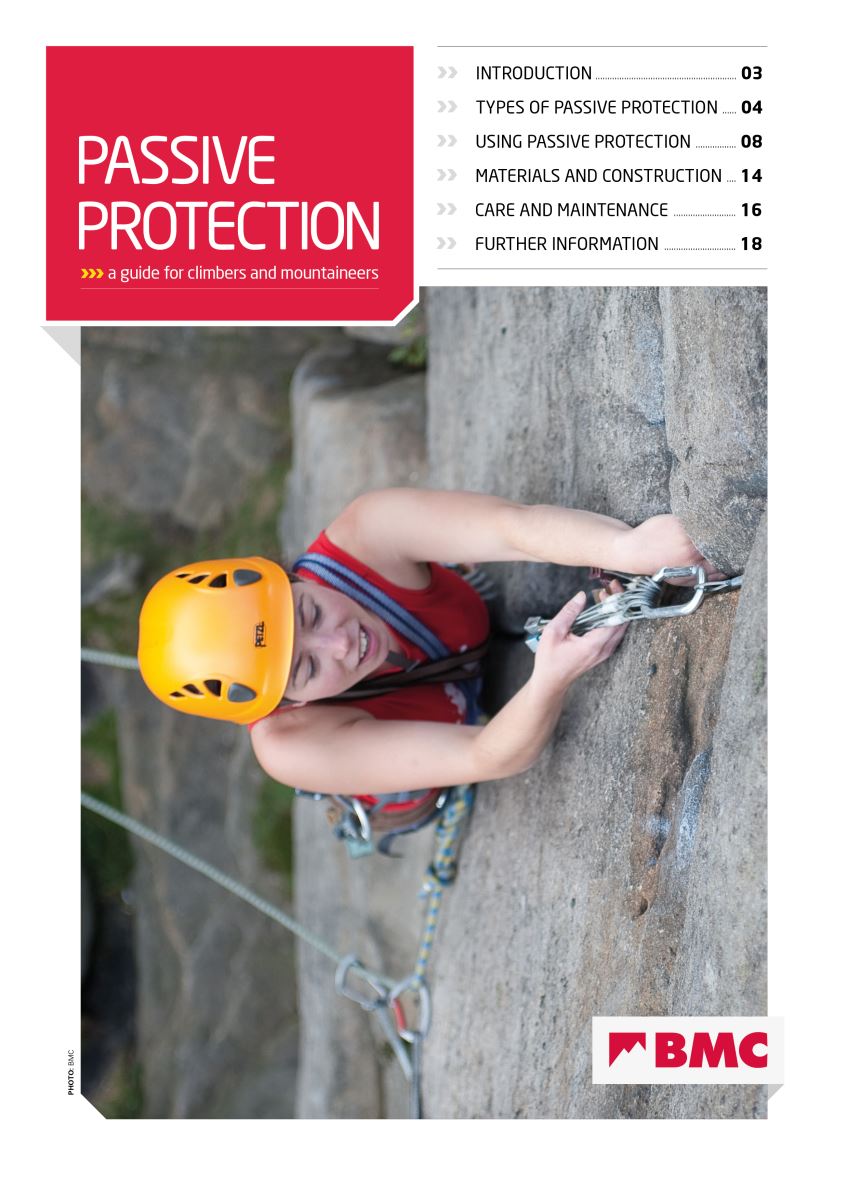Passive protection forms a key component in the equipment used by the traditional rock climber, the alpinist and the winter climber. If you'd like to find out more about nuts, hexentrics and the other varieties of passive protection on offer, then read on and download our free, handy guide.
Passive protection is a term used to cover the many different types and names given to leader placed protection which has no moving parts but which is more than just a sling.
Climbers of yesteryear realised that pebbles could be jammed into cracks with a cord tied around them for protection. Soon it was discovered that metal nuts fitted even better and could be permanently slung with cord, and we now have a wide variety of equipment to choose from which will fit cracks from the very big to the very small.
For most traditional rock climbing venues, a good selection of passive protection will form the most useful part of your rack of gear. At one end of the spectrum, for easy scrambles you might take half a dozen pieces to fit medium to large cracks. In contrast, for the long pitches at somewhere like Pembroke, you might take a triple set to fit small to medium cracks and still have to be careful not to run out in particular sizes!

WATCH: How to place a nut on BMC TV
Courses for indoor climbers making their first moves onto rock
(1).jpg)
Who are they for?
These courses are ideal for novice climbing club members, students, parents and individuals who may have had the odd taster of climbing outdoors and wish to gain key safety skills at an excellent price. They may also be a good precursor for people contemplating the Single Pitch Award training. You should already know how to put on a harness and belay. These courses are for people aged 18 or older.
What do the courses cover?
A variety of topics will be covered during the day as well as offering a fun taster to outdoor climbing. Topics may include:
-
Types of trad climbing equipment
-
Placing good protection
-
Building good belays
-
Using guidebooks
-
Seconding/top roping
« Back
This article has been read
1955
times
TAGS
Click on the tags to explore more